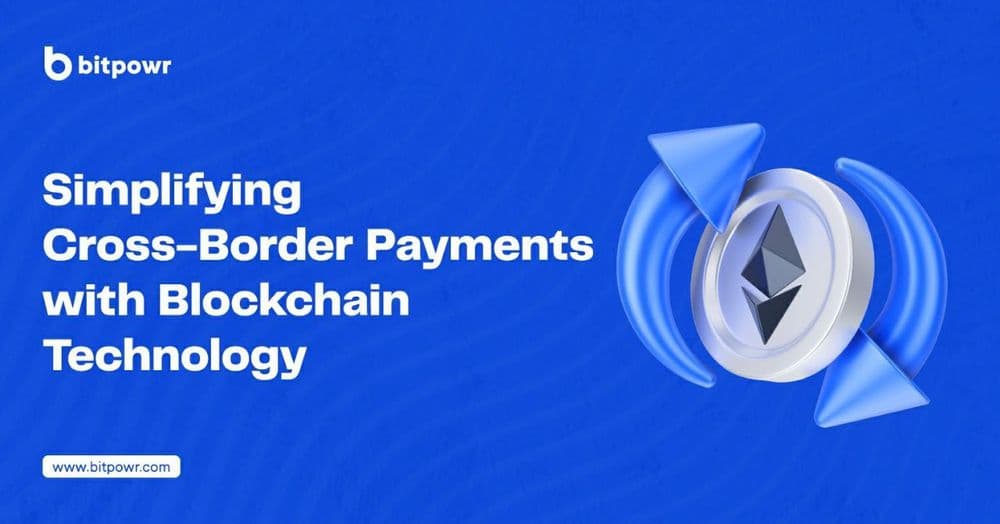Innovations surrounding money transfer have progressively simplified the process over the years. However, the cross-border payments sector hasn’t seen enough disruption to eradicate some of its most pressing problems. This is where blockchain technology comes in.
The introduction of blockchain has impacted the financial sector the most. From the eruption of cryptocurrencies to the development of decentralized financial services, blockchain is pushing to revolutionize financial systems.
The same qualities that make the blockchain fit for developing a new form of money and a viable channel for delivering financial services such as lending can also immensely benefit the cross-border payments sector. Let’s see how this is possible.
Overview of the cross-border payments sector and why it matters
Cross-border payments refer to transactions between individuals, businesses, banks, and other institutions in at least two countries.
International transfers power commerce, making it possible for individuals, companies, and countries to trade across borders.
In addition to being one of the chief drivers of global trade, cross-border payments also include remittances, another critical pillar of the modern economic system. Remittances are typically non-commercial money transfers from individuals in the diaspora to their families and friends, usually located in their home country.
The role of remittances in sustaining economies cannot be overstated. For instance, they account for nearly 4% of the GDP of low-income countries. Also, even during some of the most economically dire times, remittance inflow into low and middle-income countries showed resilience, another testament to their status as a staple of economic sustenance.
Case in point: despite the biting effects of the covid 19 pandemic, remittances into low and middle-income countries in 2020 hardly declined, dropping to $540 billion from the $548 billion recorded in 2019 — a 1.6% decrease, which was much lower than the predicted decline. But even with the slight drop, LMIC remittances in 2020 dwarfed the sum of foreign direct investment ($259 billion) and overseas development aid ($179 billion) to those same countries.
And by 2021, it resumed its upward climb, reaching $589 billion in 2021, a 7.3% increase over 2020.
While the role of cross-border payments and remittances in building financially resilient and prosperous economies cannot be downplayed, the sector is plagued by several problems threatening to undermine its transformative potential.
Challenges of cross-border payments and remittances
Sending money across borders is a painfully complex process involving several intermediaries, even though they aren’t all apparent to the sender and recipient. The presence of multiple correspondent banks required to successfully execute international settlement is, in fact, the root cause of the problems facing global cross-border payments.
First, the lengthy chain of intermediaries drives up the transaction costs of cross-border transfers. According to the World Bank, the average global cost of international transfers as of Q1 of 2021 was 6.4%, more than double the Sustainable Development Goal (SDG) targeted mark of 3%.
In the same period, the average cost of sending money to Sub-Saharan Africa stood at 8%, the highest of all the studied regions.
Additionally, several middlemen create multiple potential points of failure, extended settlement time, and security risks, all reducing the reliability of traditional international payment channels.
Cross-border payment innovations can change the game by introducing faster, cheaper, and more secure payments. Interestingly, Blockchain Technology ticks all these boxes.
The Benefits of Blockchain Technology to Cross-border Payments
1. Cost-effectiveness
According to a study by Deloitte, blockchain-powered B2B and P2P transactions result in a 60-80% reduction in transaction costs compared to nominal payment channels. This isn’t surprising, as transacting parties would not need to pay fees to multiple intermediaries when using blockchain.
2. Speed
Blockchain transactions can be confirmed almost immediately, with the earlier referenced Deloitte study also stating that transactions on the blockchain are finalized in an average of four to six seconds as opposed to the two to three days seen in traditional payment systems. This means individuals and businesses can conduct transactions faster and access and deploy funds quickly.
3. Security
Centralized transaction data storage, common with traditional payment systems, leaves room for several security issues. Data loss is a genuine risk, and security breaches are real threats that could compromise the system and pave the way for fraud and other malicious activities.
Blockchain deals with the security risks facing standard money transfer systems using its distributed ledger technology. That way, transaction and customer data is secured on a distributed ledger with no central controller, making data manipulation almost impossible.
4. Transparency
Further, the blockhain’s structure means that records are immutable and entries are confirmed by consensus, ensuring better transparency. The transaction ledger is always available to all authorized parties who can see updates in real-time, thus removing data silos, enabling faster access to accurate information, and fostering more seamless collaboration.
The Future of Cross-border Payments
Although the benefits of using blockchain technology to facilitate cross-border payments are undeniable, it has not yet seen widespread adoption for several reasons. For instance, the regulatory landscape is still largely hostile; many people are still unfamiliar with the workings of the blockchain, and elements of the system, such as cryptocurrencies, are volatile.
However, the stated problems are not unsolvable. As such, it’s reasonable to predict that, with time, more stakeholders will recognize that the benefits of blockchain to international transfers surpass its downsides and will push for its adoption.
At Bitpowr, we are building the requisite infrastructure for financial institutions to facilitate blockchain-powered cross-border payments. So if you’re looking to build blockchain infrastructure to enable cross-border settlement at scale, you should be speaking to us. Get in touch with us today.




